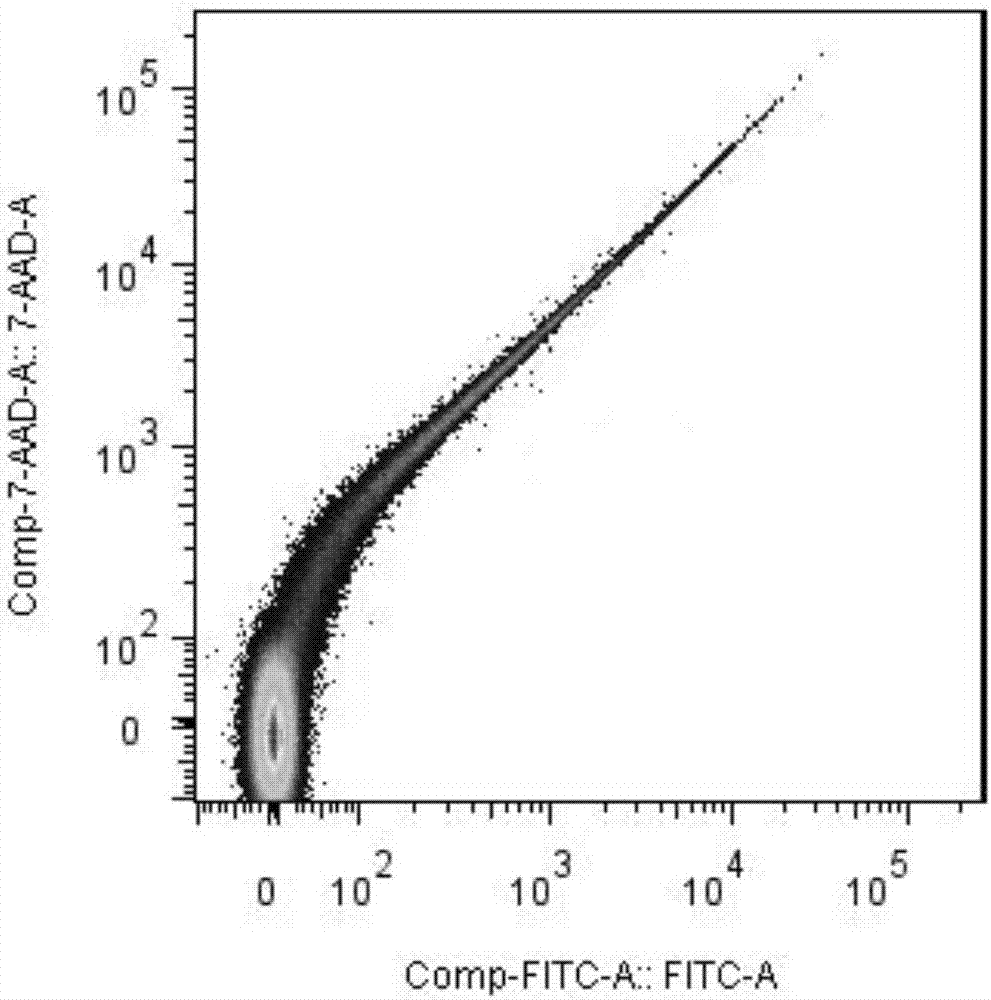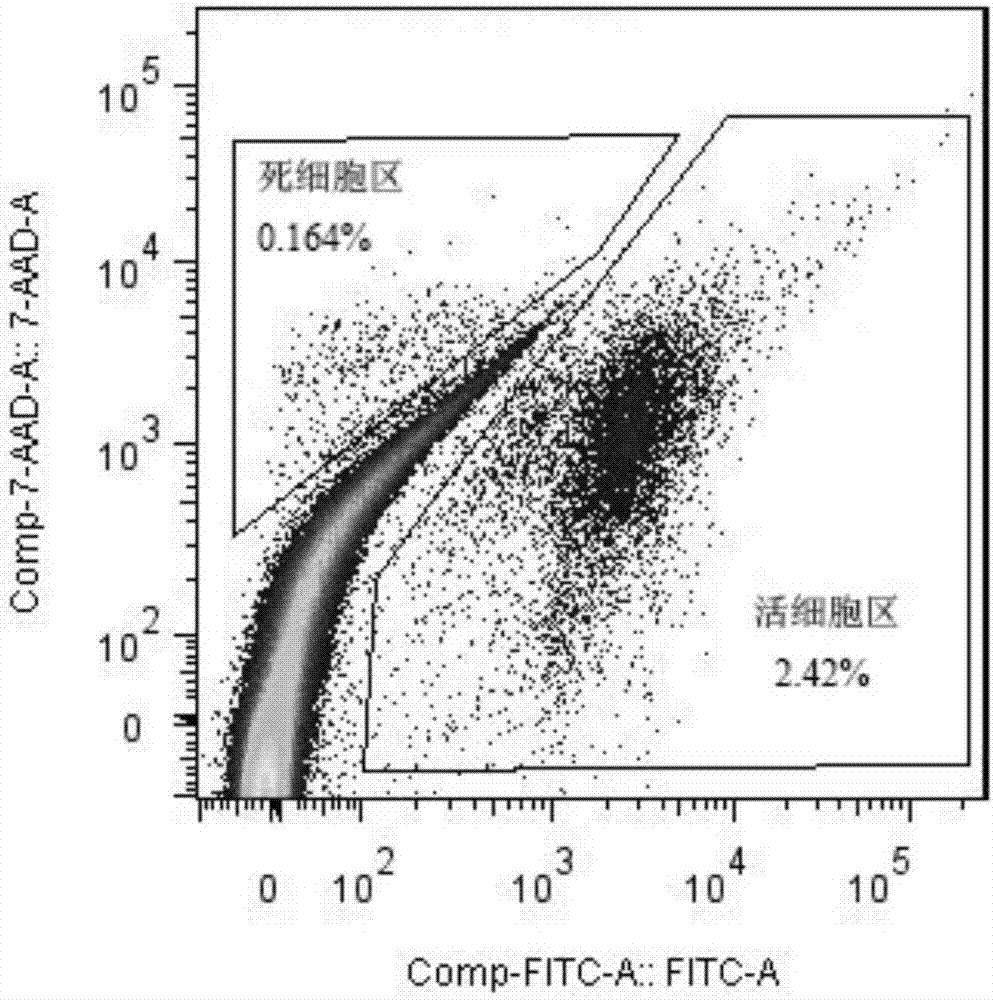Flow cytometry detection method for tetracycline resistance bacteria in drinking water
A tetracycline resistance and flow cytometer technology, which is applied to instruments, measuring devices, scientific instruments, etc., can solve the problems of inability to quickly and accurately detect the number of antibiotic resistance genes in water, inability to grow colonies, and inability to be counted. To achieve the effect of convenient and fast measurement process, accurate and reliable measurement results, and labor saving
- Summary
- Abstract
- Description
- Claims
- Application Information
AI Technical Summary
Problems solved by technology
Method used
Image
Examples
Embodiment 1
[0030] (1) Take 10ml of the water sample to be tested and put it into a brown test tube, add tetracycline mother solution (1.6g / L), so that the concentration of tetracycline in the water sample is equal to its MIC value;
[0031] (2) Place the test tube in an incubator and incubate at 27°C for 24 hours;
[0032] (3) Transfer 500 μL of the cultured water sample to the injection tube of the flow cytometer. In order to ensure the accuracy of the data, make 3 parallel samples and set a blank control sample. Only 10 mL of ultrapure water is added to the blank sample. Add SYBR Green I staining agent and PI staining agent to the parallel sample and the blank control sample respectively for staining. Before adding the SYBR Green I staining agent, use dimethyl sulfoxide (Sigma, USA) to dilute, and the dilution ratio is 1:100 ; First add 5 μL of diluted SYBR Green I staining agent, then add 1.5 μL of PI staining agent, shake fully on a vortex shaker for about 5 seconds, and then incubat...
Embodiment 2
[0036] (1) Take 10ml of the water sample to be tested in a 250ml beaker, and then add 90ml of phosphate buffer solution (34g of potassium dihydrogen phosphate, 175ml of sodium hydroxide solution (1mol / L), 825ml of ultrapure water, pH=7.2).
[0037] (2) Take 10 ml of the diluted water sample and add it to a brown test tube, add 100 μL (1.6 g / L) of tetracycline mother solution, so that the concentration of tetracycline in the water sample is equal to its MIC value;
[0038] (3) Place the test tube in an incubator and incubate at 27°C for 24 hours;
[0039] (4) Transfer 500 μL of the cultured water sample to the injection tube of the flow cytometer. In order to ensure the accuracy of the data, make 3 parallel samples and set a blank control sample. Only 10 mL of ultrapure water is added to the blank sample. Then add SYBR Green I staining agent and PI staining agent respectively for staining. Before adding SYBR Green I staining agent, use dimethyl sulfoxide (Sigma, the United Stat...
PUM
 Login to View More
Login to View More Abstract
Description
Claims
Application Information
 Login to View More
Login to View More - R&D
- Intellectual Property
- Life Sciences
- Materials
- Tech Scout
- Unparalleled Data Quality
- Higher Quality Content
- 60% Fewer Hallucinations
Browse by: Latest US Patents, China's latest patents, Technical Efficacy Thesaurus, Application Domain, Technology Topic, Popular Technical Reports.
© 2025 PatSnap. All rights reserved.Legal|Privacy policy|Modern Slavery Act Transparency Statement|Sitemap|About US| Contact US: help@patsnap.com


